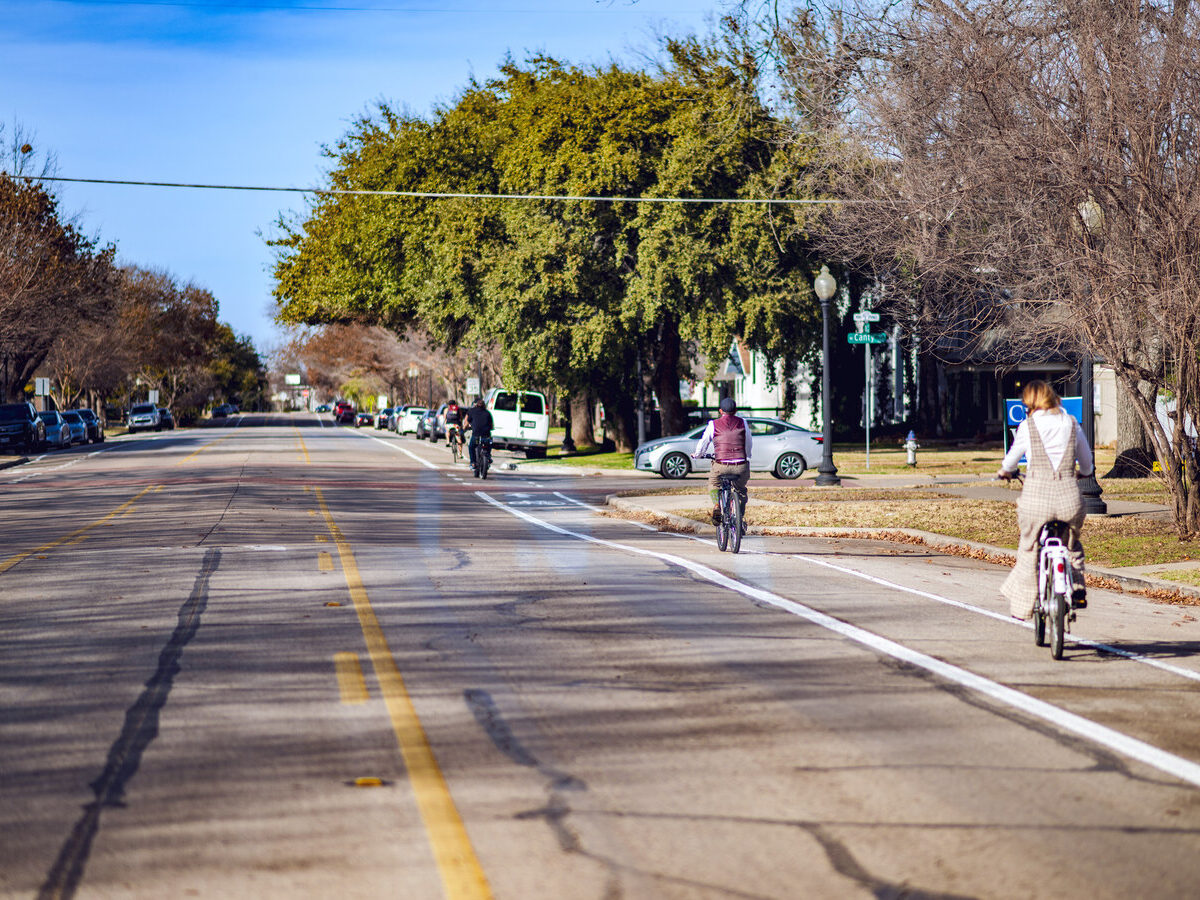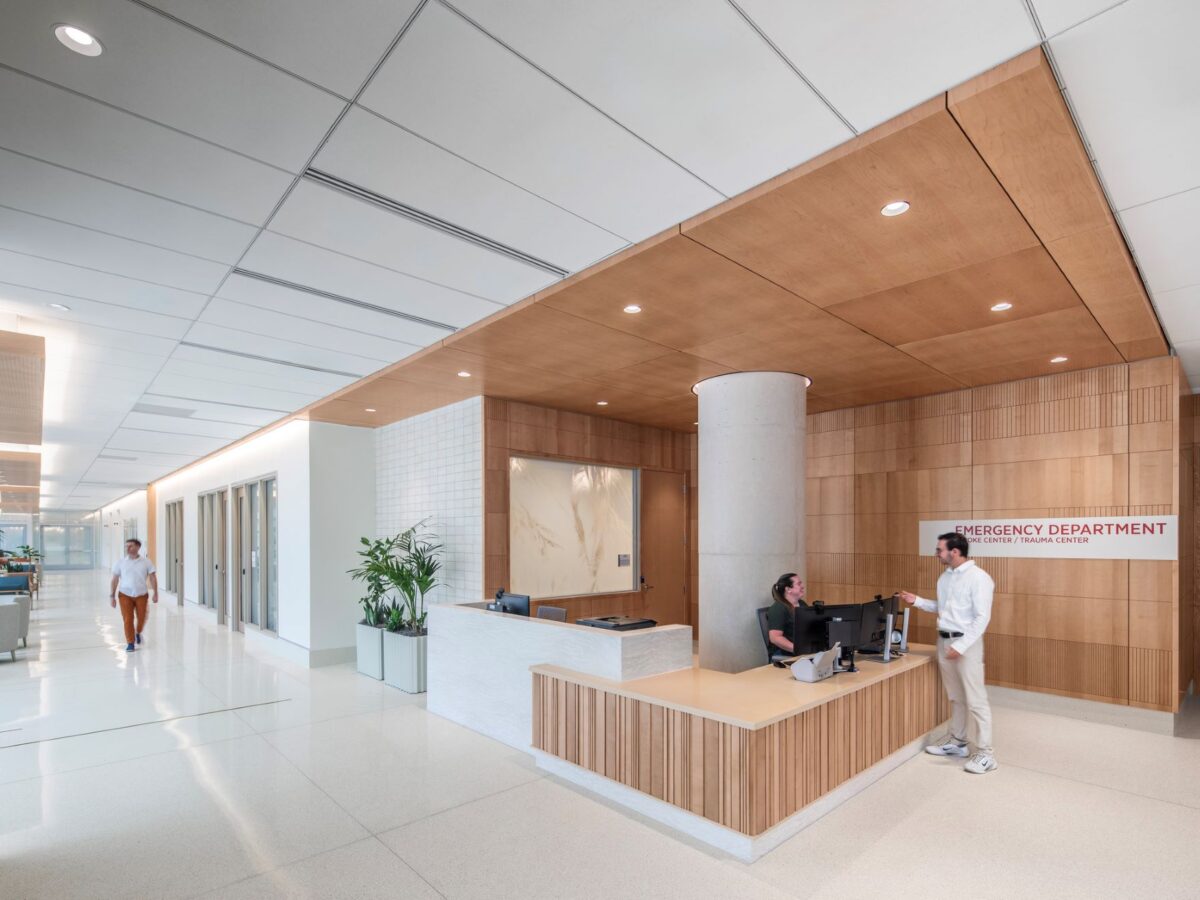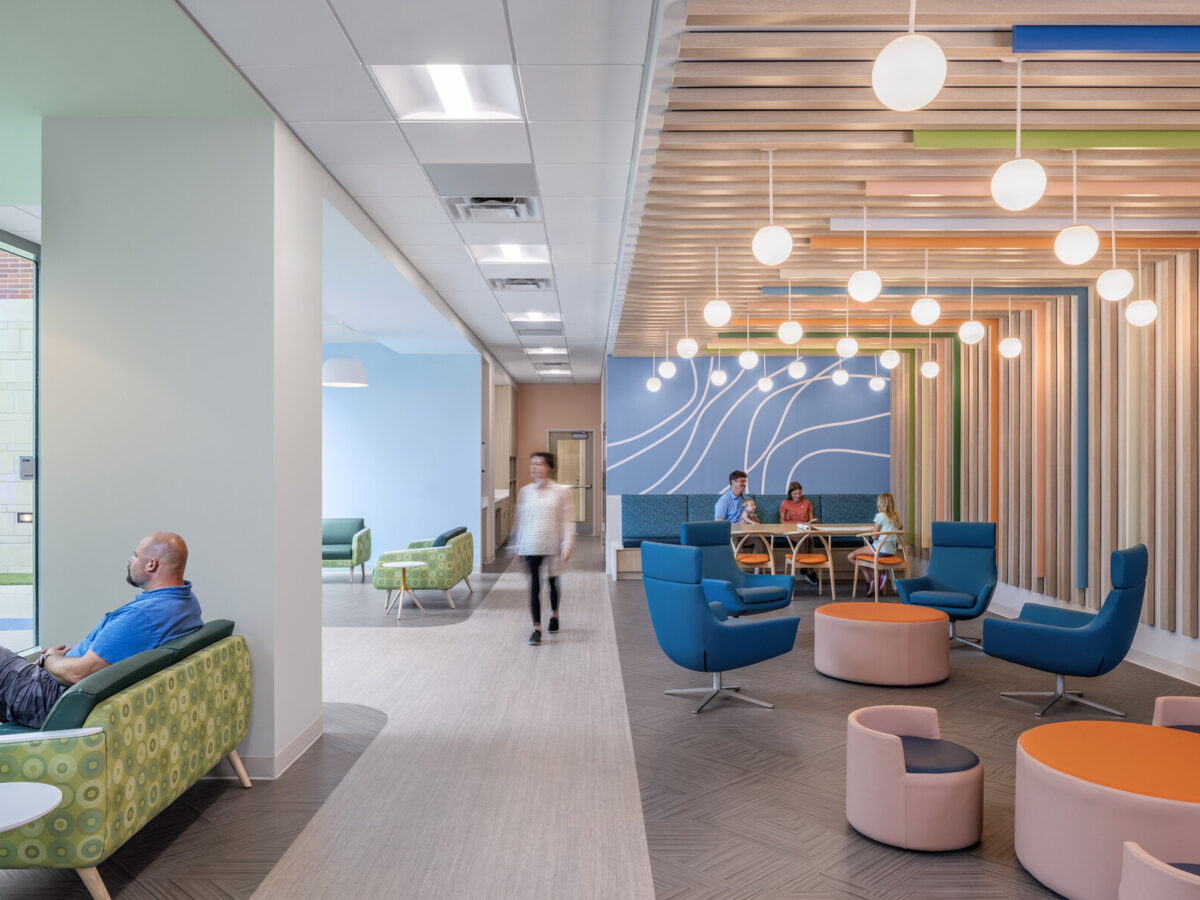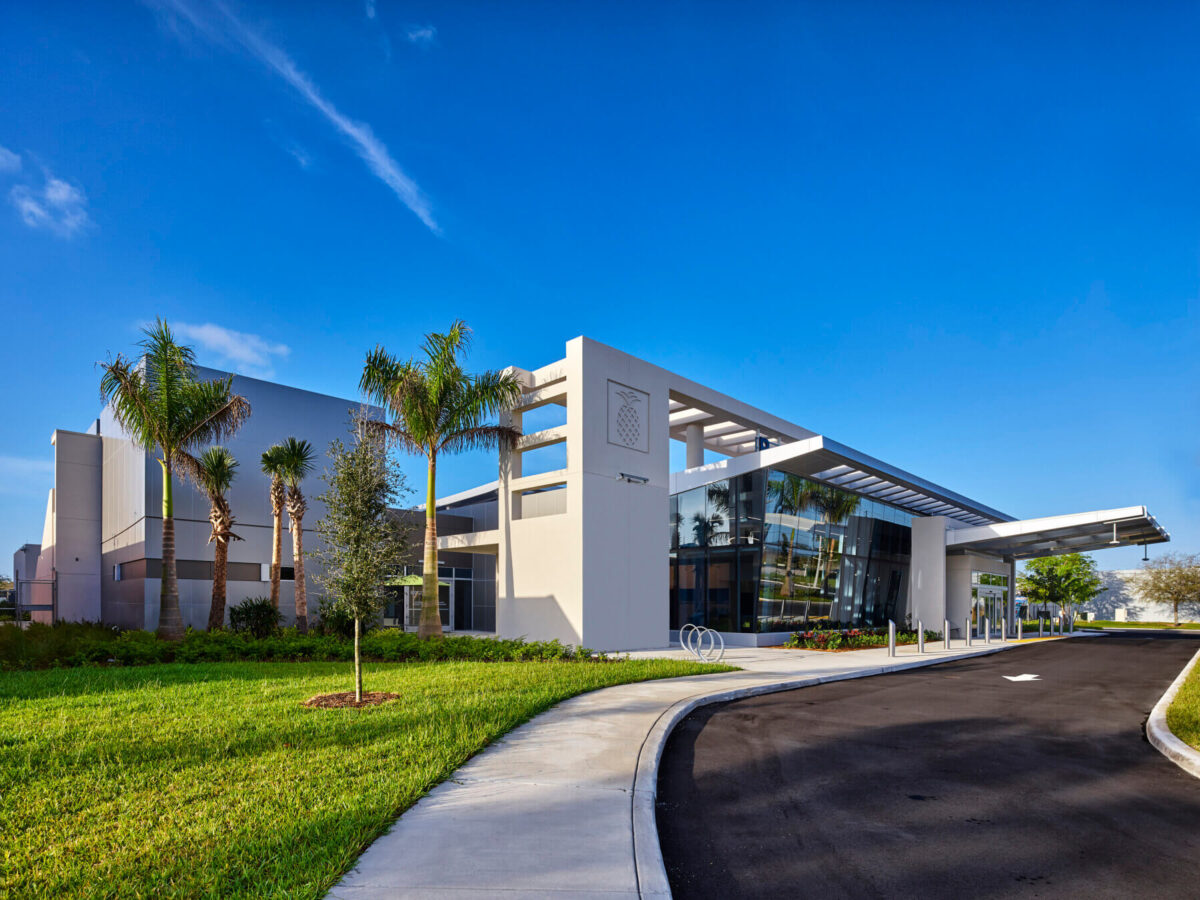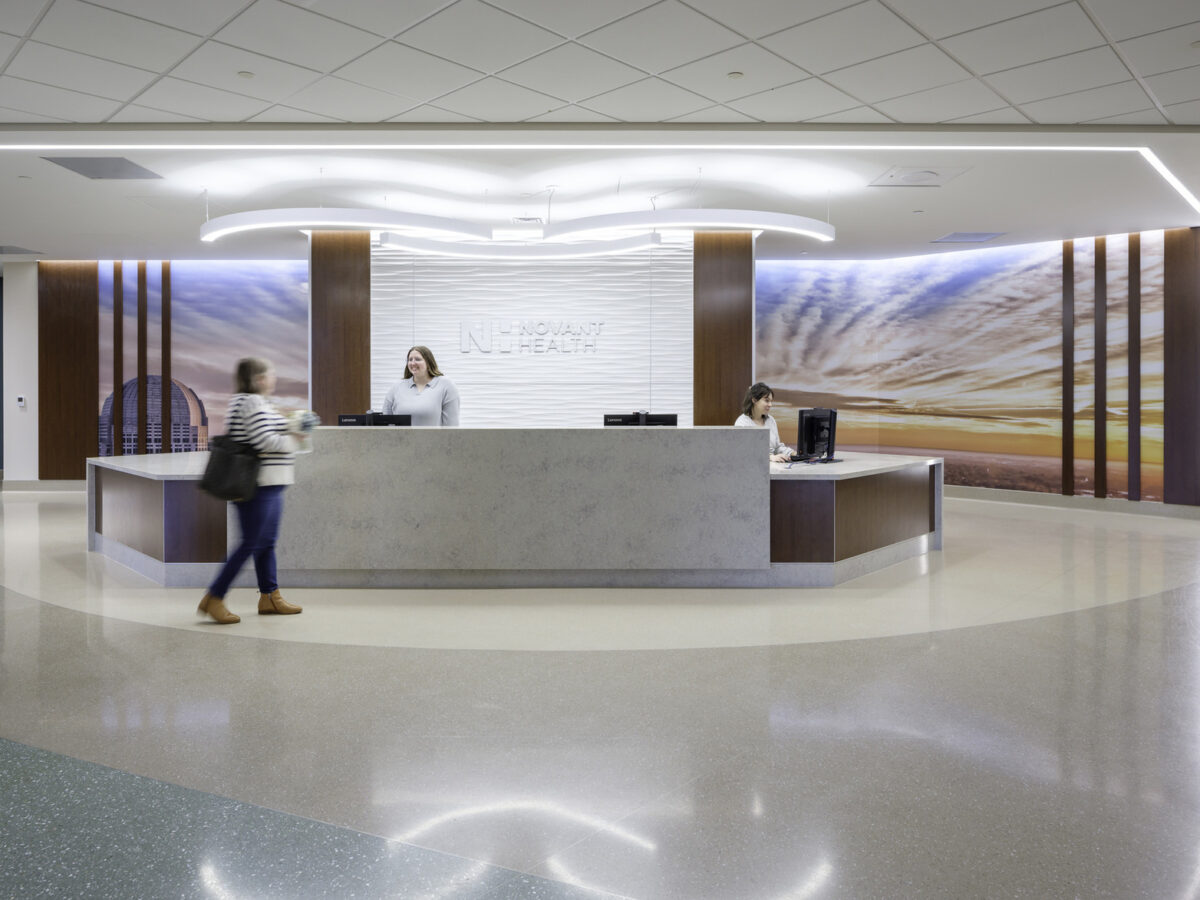Our changing climate poses a major threat to healthcare providers, because natural disasters that damage healthcare facilities often disable them at the precise time their services are needed most. It’s more important than ever that healthcare facilities build resilience to stay operational even when they lose access to municipal utilities so that they can remain a safe haven for their communities. Additionally, failures in building systems that require changes in operations have a direct impact on financials, with research estimating that severe weather events can cost hospitals anywhere from $600,000 to $2 billion per occurrence.
Baptist Health Care is building a new hospital and medical campus in Pensacola, Florida and Gresham Smith is proud to be providing architecture, engineering, and planning services for the project. Acknowledging the severity of Pensacola’s weather events, Baptist looked to assess how the new campus could be impacted by changing climate conditions before beginning the design process. Keep reading to learn why and how we conducted a climate risk assessment, as well as why facilities should consider resilient design strategies.

Learning from the Past
The most powerful driver in the decision making process is personal experience. Baptist Health Care has endured several of Northwest Florida’s severe climate events, including Hurricane Ivan in 2004 and a devastating flash flood in 2014, which caused service disruptions and cost millions of dollars. Their past experiences led to an interest in preparing for future climate threats for their new hospital campus, which is estimated to last at least another 75 to 100 years.
The opportunity to integrate future climate projection information into the multi-disciplinary design process, including detailed alternatives evaluations at key milestones, is one Gresham Smith was ready for. We are engaging with Baptist Health Care to help them understand the risks to their new campus and develop targeted mitigation strategies. The process began with a preliminary climate risk assessment during program development that is continually being adjusted as the design progresses
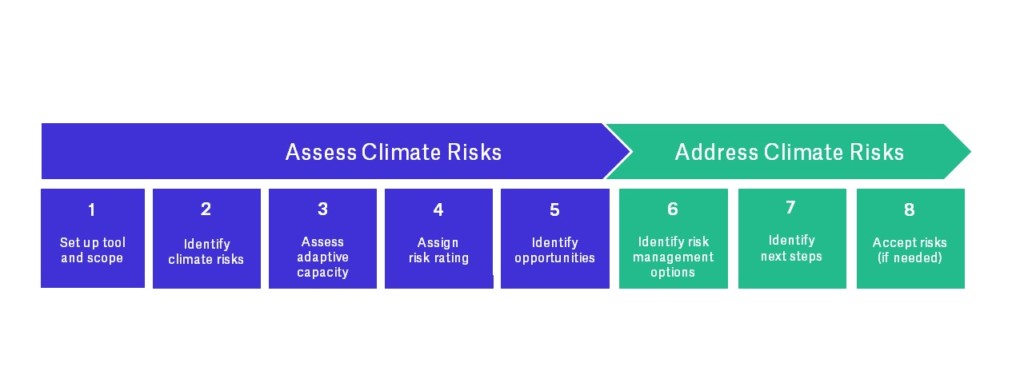
Assessing the Risks
On all of our projects, Gresham Smith’s architects and engineers factor historical climate and weather data into design decisions. However, the climate risk assessment for the Baptist Health Care Brent Lane campus is taking it a step further.
To conduct the climate risk assessment, we first identified the future projected climate hazards applicable to the site. Examples include high wind events such as hurricanes, inland flooding and water scarcity.
Then, in collaboration with the client and the architectural and engineering technical leads, we determined which of the campus’ assets are the most critical to keep online. This process is helping to prioritize financial resources and focus additional mitigation strategy development. During this step, Baptist Health Care shared their preference for how many days they would like to self-sustain operations, if needed.
The next step, and one that is continually being revisited as the design progresses, is evaluating the critical components most vulnerable to each likely climate hazard and developing strategies that will safeguard the assets and support the client’s goals. We are looking at very specific systems, such as potable water, the structural system and many others, to consider which material and/or equipment redundancies we can put in place to maximize resiliency.
Selecting design strategies is an iterative process. A risk assessment that weighs the probability that a particular climate hazard event will happen, and estimates the level of damage and potential financial impact, is one more piece of information being used to select solutions. Understanding that our client only has so much money in their budget, a holistic climate risk assessment approach is helping them to prioritize the strategies that will help them to avoid or minimize service disruptions.
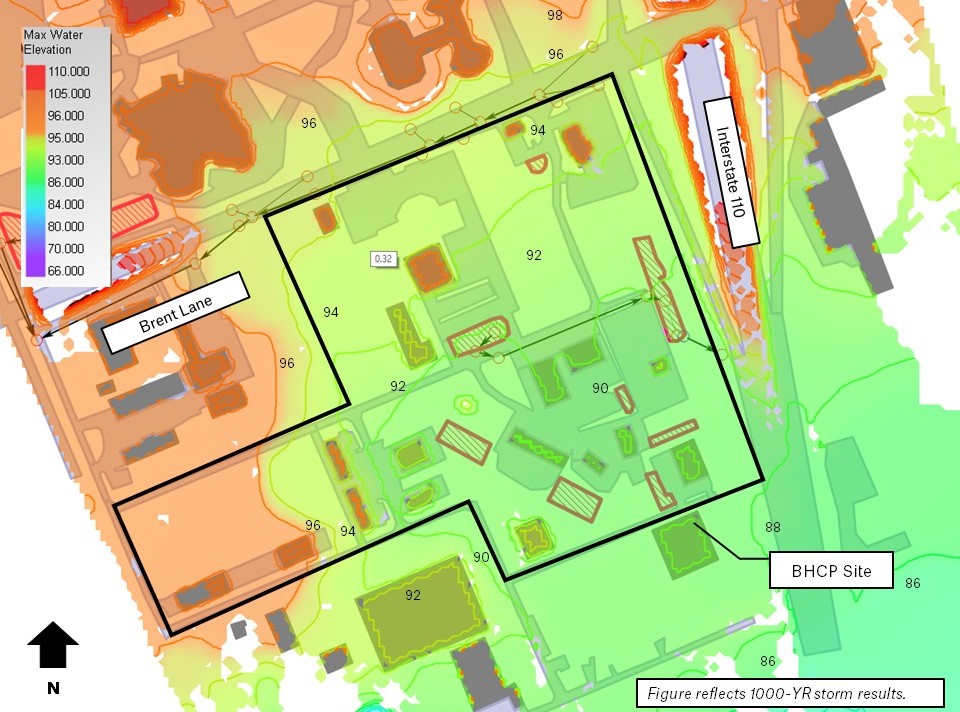
The Process in Action
One way this process is coming to life on this project is through a site-specific flood assessment. Our team is not only studying the topography of the project site, but also the characteristics of the entire watershed to understand how much water enters the site at different storm levels and where it comes from.
Using this data, our engineers used modeling software to simulate 100-, 200-, 500- and 1,000-year storms to understand the flood routing pathways and flood depths across the new hospital campus site. Using this data our design team is considering what the finished floor elevation of the building should be to avoid impacts from a severe flooding event. Our engineers are also using the information to make grading decisions and right-size stormwater infrastructure.
A changing climate creates new risks to existing and new infrastructure. It’s imperative that our communities’ most vital institutions employ resilient design principles and create redundancy to better respond during periods of extreme weather. By accounting for the projected climate hazards Baptist Health Care’s new hospital campus will be vulnerable to during its lifespan, we are providing our client with the best available information and equipping them to make smart fiscal decisions. The information is enabling our design team to develop a program and strategies that will decrease the campus’ vulnerability during hazardous conditions, ultimately helping create a strong community asset that will be able to weather the storm.


